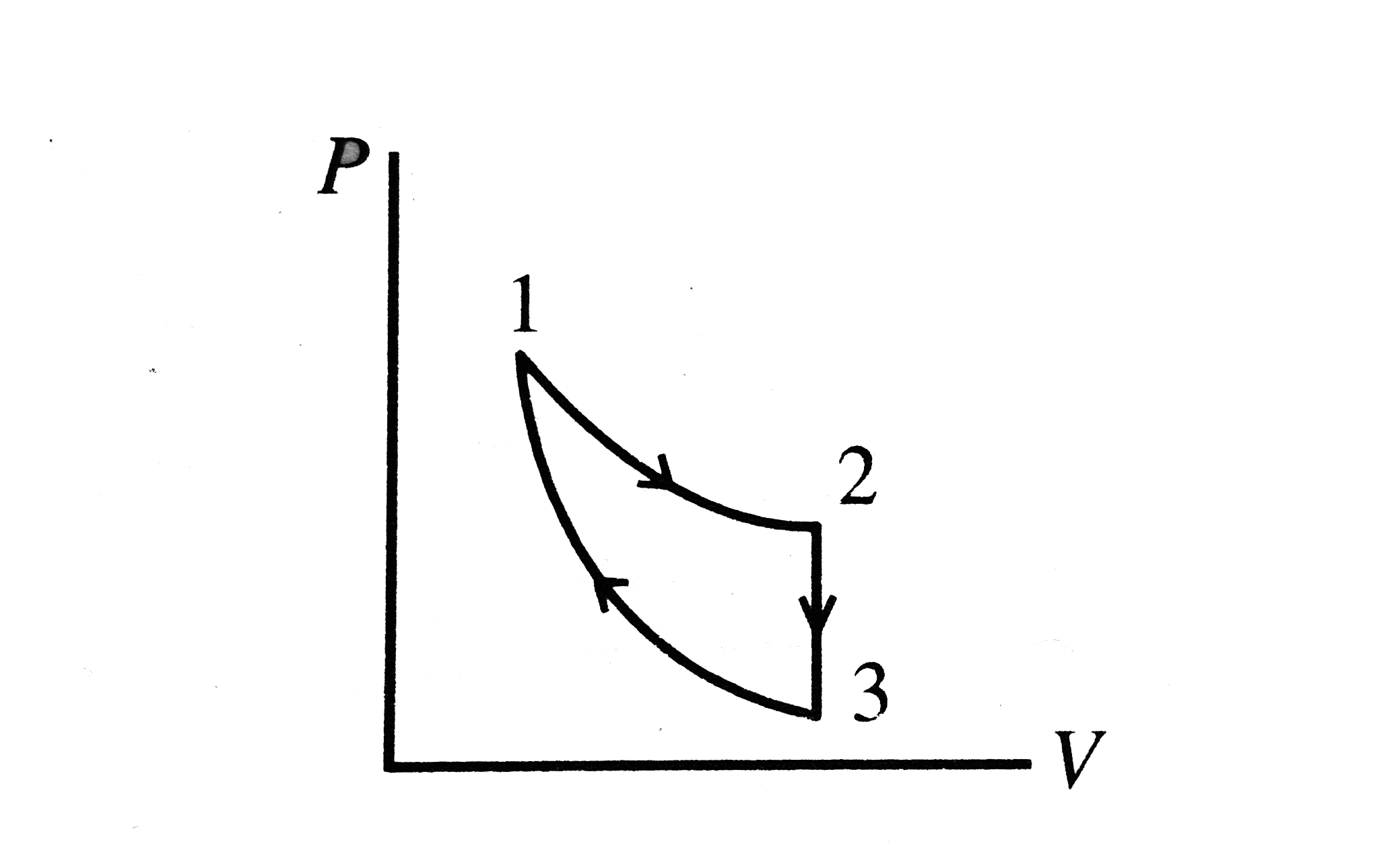During the ____ process , heat energy is formed .
circulation
excretion
digestion
respiration
The correct Answer is:D
Similar Questions
Assertion : During an adiabatic process, heat energy is not exchanged between system and its surroundings.
Reason : The temperature of a gas increases when it undergoes andn adiabatic expansion.
View SolutionThree processes compose a thermodynamic cycle shown in the accompanying P−V, diagram of an ideal gas.
Process 1→2 take place at constant temperature, during this process 60J of heat enters the system.
Process 2→3 takes place at constant volume. During this process 40J of heat leaves the system.
Process 3→1 is adiabatic.
What is the change in internal energy of the during process 3→1?
View Solution
Knowledge Check
Assetion : The temperature of a gas does not change when it undergoes on adiabatic process
Reason: During adiabatic process , heat energy is exchanged between a system and surroundings.AIf both assetion and reason are true and reaasons is the correct expanation of assetionBIf both assetion and reason are tur but reason is not the correct explanation of assetionCIf assertion is true but reason is falseDIf both assertion and reason are false.Assetion : The temperature of a gas does not change when it undergoes on adiabatic process
Reason: During adiabatic process , heat energy is exchanged between a system and surroundings.AIf both assetion and reason are true and reaasons is the correct expanation of assetionBIf both assetion and reason are tur but reason is not the correct explanation of assetionCIf assertion is true but reason is falseDIf both assertion and reason are false.Assertion : During an adiabatic process, heat energy is not exchanged between system and its surroundings.
Reason : The temperature of a gas increases when it undergoes andn adiabatic expansion.AIf both the assertion and reason are true and reason is correct explanation of the assertion .BIf both the assertion and reason are true but reason is not a correct explanation of the assertion .CIf the assertion is true but the reason is false.DIf both assertion and reason are false.
During a process, the internal energy of the system increases by 240kJ while the system performed 90kJ of work on its surroundings. How much heat was transferred between the system and the surroundings during this process. In which direction did the heat flow?
View Solution
An ideal gas undergoes a cyclic process, in which one process is isochoric, one process is isothermal and one process is adiabatic. During the isothermal process, 40 J heat is released by the gas, and during the isochoric process, 80 J heat is absorbed by the gas. if work done by the gas during adiabatic process is W1 and during isothermal process is W2 then the magnitude of W1W2 will be equal to:
View Solution
An ideal gas undergoes a cyclic process, in which one process is isochoric, one process is isothermal and one process is adiabatic. During the isothermal process, 40 J heat is released by the gas, and during the isochoric process, 80 J heat is absorbed by the gas. if work done by the gas during adiabatic process is W1 and during isothermal process is W2 then the magnitude of W1W2 will be equal to:
View SolutionThree processes compose a thermodynamic cycle shown in the accompanying P−V, diagram of an ideal gas.
Process 1→2 take place at constant temperature, during this process 60J of heat enters the system.
Process 2→3 takes place at constant volume. During this process 40J of heat leaves the system.
Process 3→1 is adiabatic.
What is the change in internal energy of the during process 3→1?
View SolutionDuring melting process, the heat given to a body is utilised in
View Solution
